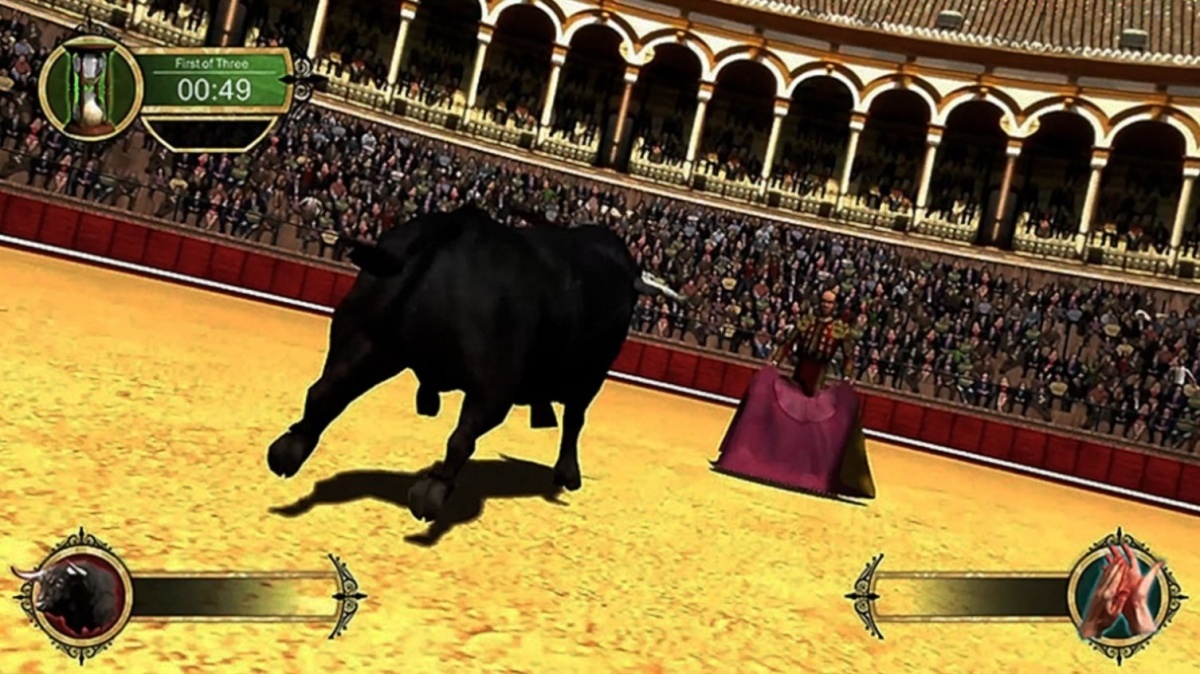Toro (PlayStation 4) Review
By Tommy Robbins  19.10.2015
19.10.2015

Games can often be the victim of unreal expectations, leading to a poor reception by the audience. Toro, a bullfighting simulator created by RECO Technology for consoles and PC, is not victim to false expectations or hyperbole. Unfortunately, it is just a bad video game, as Cubed3 reveals.
When starting up any video game, it is typical to find a rule-set. This dictates the physics, limitations, systems and mechanics set within the game that allow the player to interact with the world around them. These are the basics of any game. Beyond that, it is up to the developer to use these predetermined rules to create intrigue - the illusions that something more is happening. That second part, Toro does none of that.
Noticeably, the first thing that becomes apparent about Toro from the start screen is that, although it was made in Unreal Engine and for current-gen consoles, graphically, it resembles something from the PlayStation 2/Xbox era. Character creation is laughable as skin tone and eye colour is personalized for the otherwise unchanging stack of polygons. In the stadiums, a mass of rough character models move to simulate an audience. Everything is constructed and resembles its intended subject matter, but in the most basically functioning way possible. Graphic fidelity is the first, of several, disappointments.
When it comes to gameplay, there's nothing more exciting than five hours of quick time events. If that's an agreeable statement, then Toro is most certainly worthy of a purchase. The entirety of the mechanics within Toro are a series of double button presses that allow the avatar to wave the cape across the path of a charging bull with minimal change in style. "Which button to press after Square?" is about as much player choice as is given. Chaining these moves together in a series not only enrages the bull, but also captivates the audience, leading to a higher score and fame. A series of rounds cycle through different modes, none of which feel dissimilar.

Executing these actions feels about as rewarding as slaughtering an unsuspecting animal. It's gross. The button sequence timing is rarely pleasing, and even when successfully hitting the timing in multiple successions, the combos amount to a miniscule reward: yet another quick time event. Working through the three rounds ends in a prideful matador, blowing kisses into the crowd and an assumption that just off screen, there is a majestic animal dying. Again, it's gross. Moving along, a new arena is opened up, and guess what? Another fairly repetitive bullfight. It's at this point that it becomes easy to wish that the bull were playable, turning the tables and controlling the beast instead, as he gores his way to revenge…
Well, that's where Toro did something right. After the few hours the campaign offers in which a bullfighter rises to fame in an anticlimactic series of bullfights, the mini-games allow player agency over the bull instead. The tables are now turned. Bull Runner Throw boils down to a distance-throwing contest in which a bull charges a power meter before charging at an unsuspecting bull runner. Distance equals high score, but in the end, there's little sense of reward. Obstacle Run resembles an endless runner, in which a bull is navigated through an endless hallway, always proceeding forwards. Break through as many doors as possible to get a high score. It's all very predictable and offers little to come back to.
Honestly, this game feels so much like something from the early 2000s that it warranted checking to make sure that it wasn't a re-release. Running around the same arena with a different skin, repeating the same actions in hope for a high score, and the cheesy mini-games; it all feels like something that would have been fun when video games were still in their infancy, but now? Perhaps it would have made a decent mobile game, but to console and PC gamers, this is going to disappoint.

Cubed3 Rating
Bad
There's little to be said about Toro that couldn't be said about anything that qualifies as a video game. The systems and mechanics function, graphic fidelity serves its purpose conveying images, and the overall product runs on a level that is sellable. Other than those most basic of requirements, Toro does little more.

![]() 3/10
3/10
![]() 0
(0 Votes)
0
(0 Votes)
 Out now
Out now  Out now
Out now  None
None  Out now
Out now Comments
Comments are currently disabled

 Sign In
Sign In Game Details
Game Details Subscribe to this topic
Subscribe to this topic Features
Features







 Top
Top

